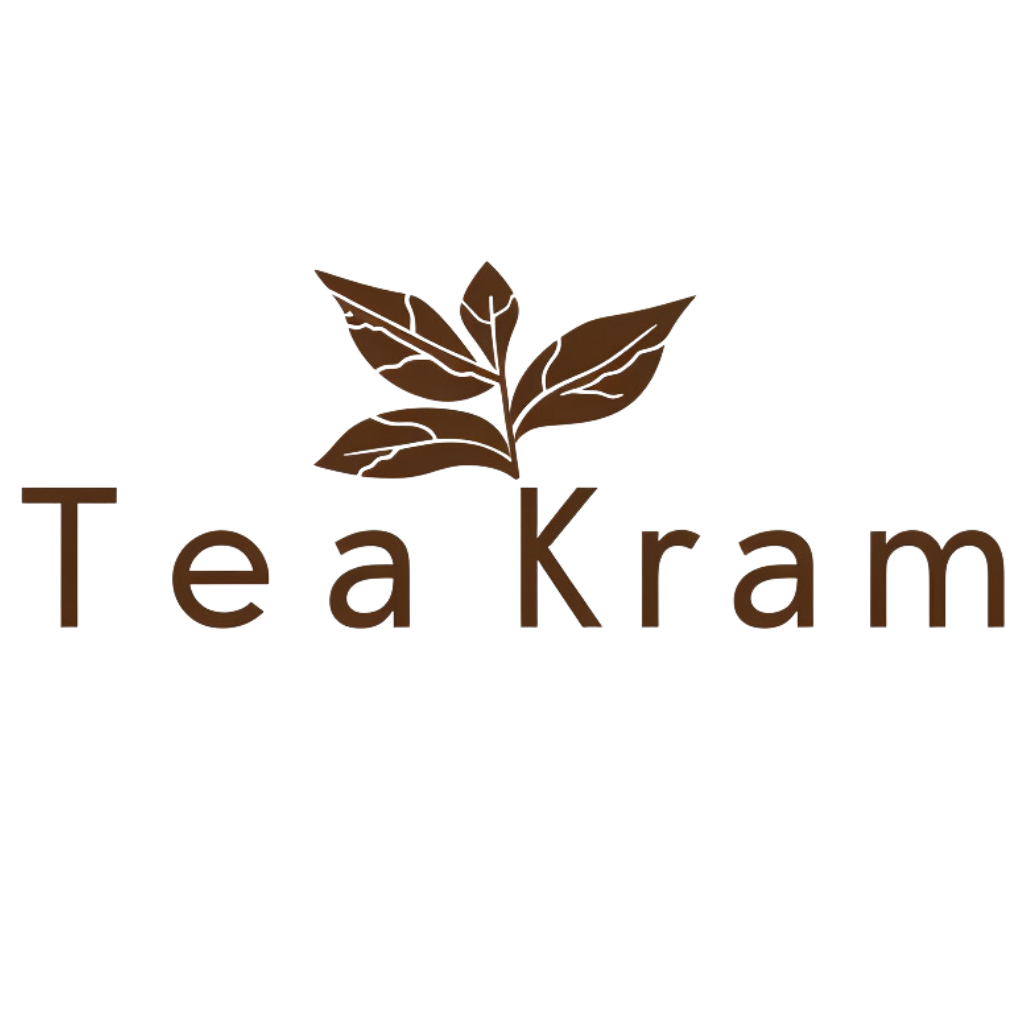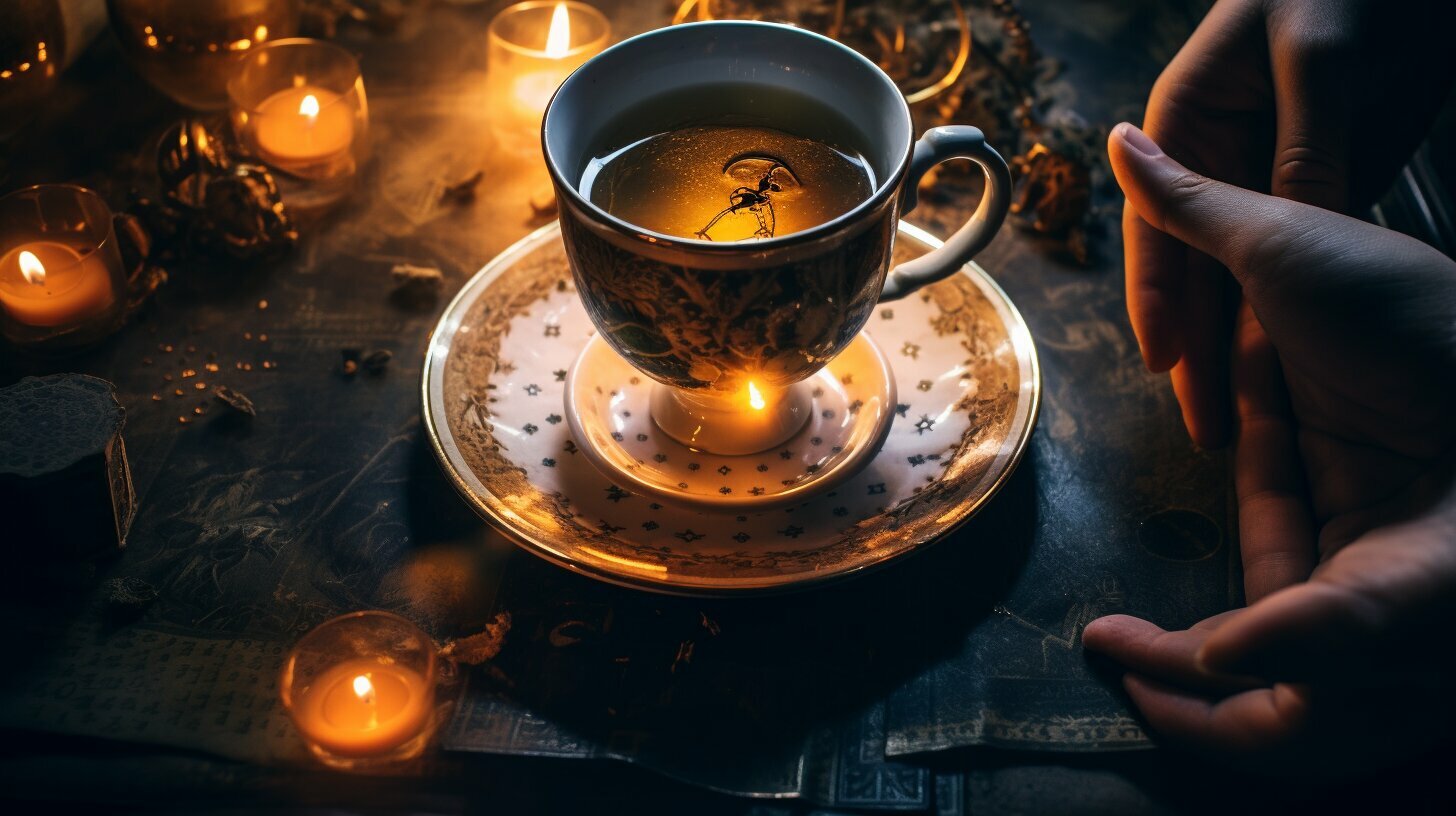Welcome to the captivating world of tea leaf reading! In this guide, I will take you on a journey through the ancient art of interpreting the patterns and symbols left behind in your teacup. Tea leaf reading, also known as tea leaf divination, is a fascinating practice that has been used for centuries to gain insights and guidance into our lives.
Whether you are a beginner or an experienced reader, this guide will provide you with valuable knowledge and techniques to enhance your tea leaf reading skills. From understanding tea leaf symbolism to developing your intuition, I will cover everything you need to know to get started on your journey. So, let’s dive in and unlock the secrets that lie within your teacup!
Key Takeaways:
- Tea leaf reading, also known as tea leaf divination, is an ancient practice used for gaining insights and guidance into our lives.
- Tea leaf reading requires understanding tea leaf symbolism, developing your intuition, and creating a serene environment for your readings.
- With this guide, you will learn the tools and techniques to enhance your tea leaf reading skills.
- Tea leaf reading can be combined with other divination practices such as tarot cards or astrology to gain deeper insights and guidance.
- Ethical considerations should be taken when providing tea leaf readings to honor the sacred nature of this practice.
The History of Tea Leaf Reading
Tea leaf reading, also known as tasseography or tasseomancy, is an ancient art of divination that dates back to the 17th century. The practice originated in China, where it was customary to leave a small amount of tea at the bottom of the cup as a sign of respect for the host or guest. This leftover tea would create patterns and shapes that were interpreted as messages from the spirit world.
Tea leaf reading quickly spread to other cultures, including the Middle East and Europe, where it became a popular method of divination. In the 19th century, it gained widespread popularity in England, where it was even included in the curriculums of some schools for girls.
Over time, tea leaf reading has evolved into a highly personal and intuitive practice that is unique to each reader. Today, it continues to be a powerful tool for self-reflection, spiritual growth, and guidance.
Getting Started: The Tools You’ll Need
Welcome to the exciting world of tea leaf reading! Before we dive into the practice itself, let’s make sure we have the right tools at hand.
The first item you’ll need is a teacup. Choose a cup with a plain, white interior to make it easier to see the tea leaves and symbols. A wide-rimmed cup with a shallow base works best for reading tea leaves, as it allows for more surface area for the leaves to spread out.
The next item you’ll need is loose-leaf tea. Avoid using tea bags, as they may contain small pieces that can interfere with your readings. Choose a tea that you enjoy and that resonates with your intuition.
You’ll also need boiling water, a saucer, and a teaspoon to steep your tea. Once steeped, you’ll need to pour the tea into your teacup, leaving a small amount of liquid at the bottom. Set the saucer on top of the cup and hold the cup and saucer together while you give it a clockwise swirl. This will distribute the leaves evenly across the cup.
Finally, you’ll need a comfortable and quiet space where you can focus on your tea leaf reading. Turn off any distractions, such as your phone or TV, and set the intention to connect with your intuition and the symbols that will appear in your teacup.
With these tools at hand, you’re ready to get started on your tea leaf reading journey. In the next section, we’ll go over brewing the perfect cup of tea for your readings.
Brewing the Perfect Cup of Tea
In order to read tea leaves, you first need to brew a proper cup of tea. Follow these simple steps to create the ideal base for your future readings:
- Choose a cup that is plain and has a wide mouth for easy leaf-reading.
- Boil fresh water in a kettle, and let it cool for a minute or two. Pour enough water to fill your cup, and let it sit for a moment to warm the cup.
- Add 1-2 teaspoons of loose leaf tea to the cup. (Note: Do not use tea bags.)
- Pour hot water over the leaves, leaving a little room at the top for the leaves to expand. Cover the cup with a saucer or another small plate to keep the heat in and to steep the tea properly.
- Let the tea steep for 2-3 minutes, or longer if desired. (Note: Avoid steeping for too long, as this can cause the tea to become bitter.)
- Remove the plate and add milk and/or sugar to taste, if desired. Stir the tea gently with a spoon.
- Hold the cup by the handle and circle it three times clockwise to distribute the leaves evenly.
- Drink the tea, leaving a small amount of liquid and a layer of tea leaves at the bottom of the cup for reading.
Congratulations! You have now brewed a perfect cup of tea for reading. The next step is to learn how to interpret the symbols and patterns left behind in the tea leaves.
The Reading Ritual: Setting the Stage
Before beginning a tea leaf reading, it’s important to create a calming and sacred environment to enhance your spiritual connection with the tea leaves. Setting the stage for your reading ritual helps create a focused and mindful atmosphere that allows for greater clarity and insight.
Cleanse Your Space
Start by cleansing your space of any negative energy. You may choose to do this by lighting sage, palo santo or incense and wafting it around the room. This helps to clear the space and create an inviting environment for positive energy to flow.
Choose Your Tea and Teacup
Choose a tea that resonates with you and your intention for the reading. If you’re seeking clarity, you may want to choose a green tea. If you’re looking to connect with your intuition, a chamomile tea may be more suitable. Once you’ve chosen your tea, select a teacup that speaks to you. Make sure it has a light-colored interior to allow for easier interpretation of the tea leaf symbols.
Create a Calming Atmosphere
Find a comfortable, quiet place where you won’t be disturbed. Dim the lights or light a few candles to create a calming atmosphere. Soft, soothing music can also enhance the experience.
Set Your Intention
Before you begin drinking your tea, set an intention for your reading. Focus on what you hope to gain from the experience and visualize the outcome. This helps to solidify the intention and creates a clear channel for communication with the spiritual realm.
Drink Your Tea Mindfully
As you drink your tea, do so mindfully. Pay attention to the flavors and sensations in your mouth. Allow yourself to become fully present in the moment. When you’ve finished your tea, hold the teacup in your left hand and swirl it three times clockwise. This helps to distribute the tea leaves and prepare them for reading.
Now that you’ve set the stage for your tea leaf reading, you’re ready to start interpreting the symbols in your cup. In the next section, we’ll explore the world of tea leaf interpretation.
Deciphering the Symbols: Tea Leaf Interpretation
Tea leaf reading is all about interpreting symbols that are left behind in your teacup. These symbols can come in various forms, including shapes, lines, and patterns. Interpretation is key in this practice, as each symbol can hold a unique meaning.
When first learning how to interpret tea leaves, it’s important to start with simple symbols and gradually work your way up to more complex ones. The more you practice, the easier it will become to identify and interpret symbols accurately.
Tea Leaf Symbolism
Tea leaf symbolism can vary depending on the culture, region, and even the specific tea blend used. However, there are some common symbols that tend to appear frequently in tea leaf readings.
Animal symbols: Animals can represent different qualities and characteristics, such as strength, freedom, or cunningness. Some common animal symbols in tea leaf readings include birds, cats, and snakes.
Nature symbols: Nature symbols can represent different elements and emotions, such as growth, vitality, or harmony. Some common nature symbols in tea leaf readings include flowers, trees, and raindrops.
People symbols: People symbols can represent different types of individuals or relationships, such as family, friends, or enemies. Some common people symbols in tea leaf readings include faces, hands, and hearts.
How to Interpret Tea Leaves
Interpreting tea leaves requires a mix of intuition and knowledge of symbolism. Here are some tips on how to interpret tea leaves:
- Look for the dominant symbol in the teacup.
- Identify any supporting symbols that may enhance the meaning of the dominant symbol.
- Consider the placement of the symbols and how they relate to each other.
- Combine your intuition with your knowledge of symbolism to form a cohesive interpretation.
Remember, interpretation is subjective and can vary from person to person. Trust your instincts and allow the symbols to guide you.
In the next section, we’ll dive deeper into common tea leaf symbols and their meanings.
Common Tea Leaf Symbols and Their Meanings
Tea leaf reading involves interpreting the various shapes and patterns that appear in your teacup. Each symbol represents a different message or insight, providing a glimpse into your past, present, or future. Here are some common tea leaf symbols and their meanings:
| Symbol | Meaning |
|---|---|
| Anchor | Stability and security in love or career |
| Bird | Freedom, travel, or news |
| Circle | Unity, wholeness. or a cycle coming to completion |
| Cross | Difficulties and challenges on the horizon |
| Heart | Love, romance, or a close emotional connection |
| Mountain | Obstacles or challenges to overcome |
| Tree | Growth, stability, or health |
| Triangle | Change, conflict, or a decision to make |
Remember, the symbolism of tea leaves can vary depending on the context in which they appear. To get the most accurate reading, consider the overall pattern of the leaves and the other symbols present. Trust your intuition and allow your subconscious to guide you in interpreting the tea leaf symbols.
Enhancing Your Intuition: Developing Your Reading Skills
Reading tea leaves is a practice that requires a certain level of intuition and connection with the spiritual realm. While some people may naturally possess these abilities, others may need to work on developing them. Here are some exercises and techniques that can help enhance your intuition and strengthen your tea leaf reading skills:
- Meditation: Regular meditation can help quiet your mind and enhance your ability to connect with your intuition. Find a quiet place where you can sit or lie down comfortably, and focus on your breath. Allow any thoughts to come and go without judgment or attachment.
- Journaling: Keeping a journal can help you reflect on your tea leaf readings and track your progress. Write down any symbols or messages that stand out to you, and reflect on their meanings. This can help you develop a deeper understanding of the symbolism and patterns that appear in your teacup.
- Practice: The more you practice tea leaf reading, the easier it becomes. Try to incorporate it into your daily routine, and practice reading for yourself and others. This can help you develop your intuitive abilities and gain confidence in your readings.
- Intention Setting: Before you begin your tea leaf reading session, set an intention for what you hope to gain from the reading. This can help you focus your energy and connect more deeply with the tea leaves.
Remember that developing your intuitive abilities is a journey, and it may take time and patience to see results. Be gentle with yourself, and trust that your intuition will guide you as you continue to practice reading tea leaves.
Combining Tea Leaf Reading with Other Divination Methods
Tea leaf reading can be a powerful tool on its own, but it can also be combined with other divination practices to gain deeper insights and guidance. For example, you might use tarot cards to provide additional context to a tea leaf reading, or astrology to gain a broader understanding of the messages that are coming through. Pendulum dowsing can also be a useful tool for clarifying specific details.
When combining tea leaf reading with other divination methods, it’s important to approach the process with an open mind and a willingness to integrate different modalities. Remember that the goal is to gain a more complete understanding of the situation at hand, not to rely on any one method as a definitive answer.
If you’re new to combining divination methods, start by experimenting with different techniques and seeing how they resonate with you. You may find that certain combinations work best for you, while others don’t feel quite as effective. Trust your intuition and allow yourself to be guided by the messages that come through.
Remember that each divination practice is unique and has its own strengths and limitations. Tea leaf reading is particularly well-suited for gaining insights into present and near-future events, while astrology can provide a broader perspective on the underlying forces at play. Tarot, on the other hand, is useful for exploring the deeper psychological and spiritual aspects of a situation.
When combining divination methods, be sure to set clear intentions and focus your energy on the specific question or issue you’re seeking guidance on. For example, you might ask a question like, “What do I need to know about my career path?” or “What steps can I take to improve my relationship with my partner?”
Ultimately, combining divination methods can be a powerful way to gain deeper insights and clarity into your life. By using tea leaf reading alongside other modalities, you can unlock new levels of understanding and tap into your inner wisdom in transformative ways.
Common Mistakes to Avoid in Tea Leaf Reading
As with any new skill, it’s common to make mistakes when learning how to read tea leaves. Here are some common errors to watch out for:
- Overthinking symbols: One of the biggest mistakes beginners make is overanalyzing every little symbol in the cup. Instead, focus on the overall pattern and how it relates to the querent’s question.
- Reading too much into things: It’s important to strike a balance between interpreting the symbols and projecting your own biases onto the reading. Remember that tea leaf reading is about intuition, not analysis.
- Not trusting your instincts: Trust your gut when interpreting symbols. Your intuition is your guide, and it’s important to cultivate your innate sense of knowing.
- Not asking open-ended questions: Make sure the querent asks open-ended questions that allow for a variety of possibilities. Avoid questions that have a simple yes or no answer.
- Not setting the right intention: Before starting the reading, ensure you set the right intention. Focus on your connection with the querent and the symbols that appear in the cup.
Remember that tea leaf reading is a practice that requires patience, practice, and an open mind. Trust yourself and the process, and don’t be discouraged by setbacks or misinterpretations. With time and dedication, you’ll become a skilled tea leaf reader.
Ethical Considerations in Tea Leaf Reading
As a tea leaf reader, I take my responsibility to provide ethical and empowering readings very seriously. It is important to approach each reading with integrity and respect for the querent’s privacy.
Tea leaf reading is a sacred and deeply personal practice, and it is important to honor that by creating a safe and comfortable environment for the querent. Always obtain their permission before beginning the reading, and assure them that the information revealed will be kept confidential.
It is important not to make grandiose claims about the accuracy of your readings or use scare tactics to pressure the querent into making a decision. Instead, focus on providing guidance and support, and let them make their own decisions based on the information presented.
It is also important to avoid making predictions about health or financial outcomes, as these can create undue stress and anxiety for the querent. Instead, use the tea leaves to provide insight into their current circumstances and the potential paths they can take.
Remember to always approach tea leaf reading with humility and respect for the querent’s journey. By doing so, you can provide a valuable and meaningful experience that can help guide them towards their highest potential.
Conclusion
In conclusion, learning how to read tea leaves can be a deeply rewarding experience that offers insight and guidance into our lives. As we have explored in this guide, tea leaf reading has a rich history and cultural significance, and it has evolved over the centuries to become a popular method of divination. To become a skilled tea leaf reader, one must start with the basics, such as selecting the perfect teacup and brewing the perfect cup of tea. Creating a serene and sacred space for your reading sessions is also essential, as it enhances your connection with the spiritual realm. Deciphering the symbols and interpreting the various shapes and patterns that appear in your teacup requires practice and intuition. I have provided a comprehensive guide to interpreting the most common tea leaf symbols and their meanings. Furthermore, we have explored how tea leaf reading can be combined with other divination practices to gain deeper insights and guidance. However, as with any divination method, ethical considerations are crucial when approaching tea leaf readings. In conclusion, I encourage you to embrace the art of tea leaf reading and continue to deepen your understanding of the symbols and messages that appear in your cup. May your tea leaf readings bring clarity, wisdom, and joy to your life.Can I Use Catnip Tea to Read Tea Leaves?
Wondering if you can make catnip tea to read tea leaves? While catnip tea is popular among cat owners, it doesn’t have any traditional association with reading tea leaves. However, you can certainly enjoy a cup of catnip tea to relax and unwind, but for tea leaf reading, stick to traditional teas like black, green, or herbal blends.
FAQ
What is tea leaf reading?
Tea leaf reading, also known as tasseography, is an ancient practice of divination that involves interpreting symbols and patterns formed by tea leaves in a teacup.
How does tea leaf reading work?
During a tea leaf reading, the tea leaves are scattered in the cup and the reader examines the shapes and patterns they form. These symbols are then interpreted to provide insights and guidance to the person receiving the reading.
Can anyone learn how to read tea leaves?
Absolutely! Anyone with an interest in tea leaf reading can learn the art. It does require practice and patience to develop the necessary skills, but with dedication, anyone can become proficient in interpreting tea leaf symbols.
Do I need special tools to read tea leaves?
While there are no strict requirements, having a teacup with a wide rim and a plain interior is recommended. Additionally, loose-leaf tea and a teapot or kettle for brewing the tea are essential.
How long does a tea leaf reading session typically last?
The duration of a tea leaf reading can vary depending on the complexity of the symbols and the depth of interpretation. On average, a session can last anywhere from 30 minutes to an hour.
Are tea leaf readings accurate?
The accuracy of tea leaf readings depends on the reader’s skill and the querent’s openness to receiving guidance. While the symbols themselves hold meaning, it is ultimately the interpreter who provides insights and interpretations.
Can tea leaf reading predict the future?
Tea leaf reading is not fortune-telling in the traditional sense. Instead, it offers guidance and insights into various aspects of a person’s life. It can help shed light on current situations and provide guidance on potential paths forward.
Is tea leaf reading associated with any specific culture or religion?
Tea leaf reading has roots in various cultures, including Chinese, Middle Eastern, and European traditions. It is practiced by people from different religious backgrounds and is not tied to any specific faith or belief system.
Can I combine tea leaf reading with other divination methods?
Yes, tea leaf reading can be combined with other divination practices, such as tarot card reading or astrology. Integrating different methods can provide a more comprehensive and nuanced understanding of the messages and insights revealed.
How can I enhance my intuition for tea leaf reading?
Developing your intuition takes time and practice. Engaging in meditation, mindfulness exercises, and exploring your own spiritual practices can help strengthen your intuition and connection with the tea leaves.
What should I do if I’m unsure about the interpretation of a symbol?
When in doubt, trust your instincts and rely on your intuition. If you are unsure about a particular symbol’s meaning, you can consult reference books or seek guidance from experienced tea leaf readers to gain more insights.



